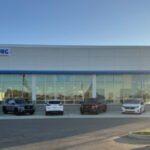The debate between separates and integrated amplifiers is a long-standing one in the audio world. Recently, a user considering a switch to vintage receivers, specifically models like the Pioneer SX-1050, SX-1080, and SX-1010, questioned if these classics could adequately power their Linton speakers, much like their current Harman Kardon HK3490 integrated amplifier. This is a valid concern, especially when moving from modern equipment to vintage gear.
It’s crucial to understand that not all receivers, or separates for that matter, are created equal. The quality of both the preamplifier and amplifier sections in a separates system significantly impacts the overall sound. A weak link in either component will compromise the audio experience. The original poster’s experience with separates highlights this point. They found an improvement in sound quality by moving to well-matched separates after initially using a Rotel RX-1052 receiver, which, while convenient with a remote, offered only “mediocre” sound compared to their desired level.
When considering vintage Pioneer receivers like the SX-1050 in comparison to a modern integrated amp like the HK3490, power output is a key specification. The HK3490 delivers 120 watts per channel. Interestingly, the Pioneer SX-1050 and SX-1080 also boast a similar 120 watts per channel, while the SX-1010 offers a slightly lower 100 watts. In practical terms, the difference in volume output between these models would be minimal. It takes a doubling of power to gain a noticeable 3dB increase in loudness. Therefore, in terms of sheer power to drive speakers like the Lintons, the Pioneer SX-1050 and SX-1080 are certainly in the same ballpark as the HK3490.
However, the allure of vintage receivers like the Pioneer SX-1050 extends beyond just power. Many audiophiles appreciate the sonic characteristics of these classic units. While power figures are comparable, the sound signature can differ significantly. Some argue that vintage receivers, particularly well-regarded models like the Pioneer SX-1010 and, by extension, the SX-1050, offer a warmer, more musical sound compared to some modern amplifiers. The choice often comes down to personal preference and the desired audio characteristics.
It’s worth noting a common point of discussion regarding the Pioneer SX-1010: its power supply. Due to its placement within the unit, it can be prone to overheating. However, knowledgeable technicians familiar with the SX-1010 can address this issue by rebuilding the power supply to improve its reliability and longevity. While considering a vintage receiver like the Pioneer SX-1050 or SX-1010, factoring in potential maintenance and restoration is important, especially for units of this age.
For those intrigued by the Pioneer SX-1010 and its lineage, further exploration is recommended. Online forums like Audiokarma host extensive discussions and user experiences, such as the thread “SX1010 Is it the pinnacle of Pioneers Receiver engineering? Maybe it is!!” which delves into the merits and potential of this iconic receiver. While the original question centered around power for Linton speakers, the broader appeal of receivers like the Pioneer SX-1050 lies in their blend of vintage aesthetics, robust build quality, and potentially unique sonic characteristics that continue to captivate audio enthusiasts today.

